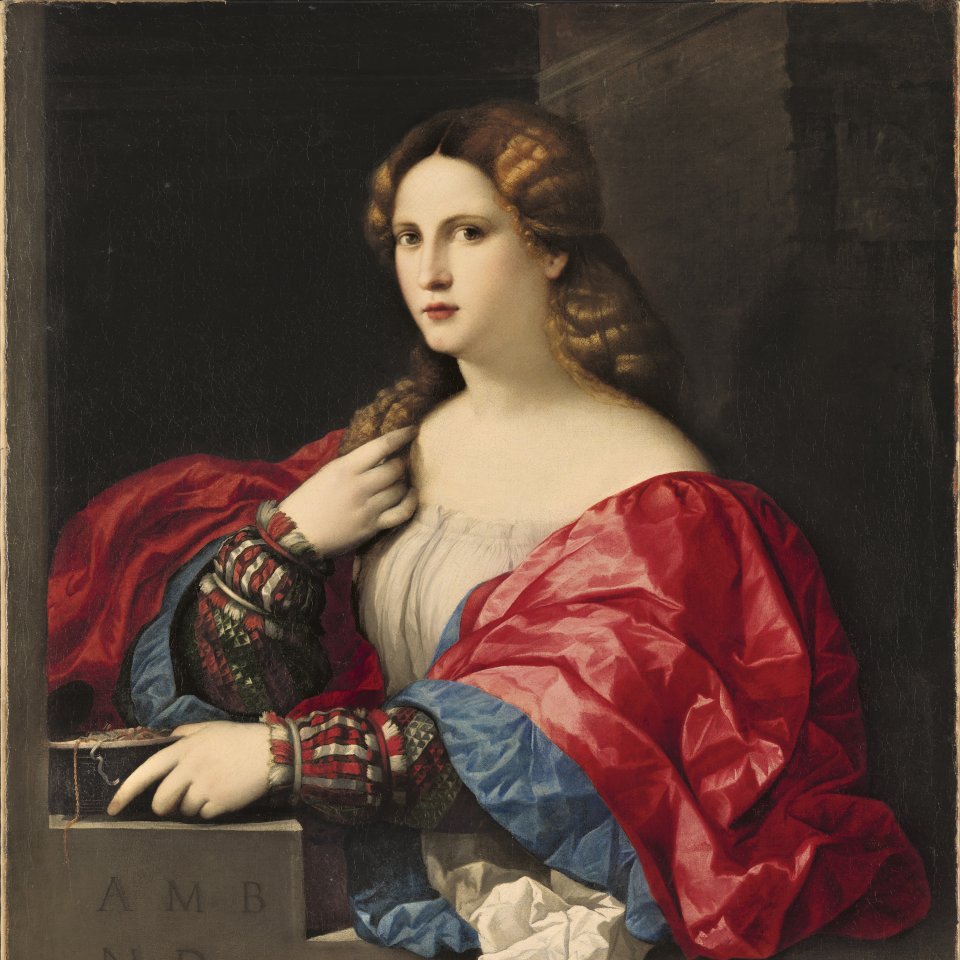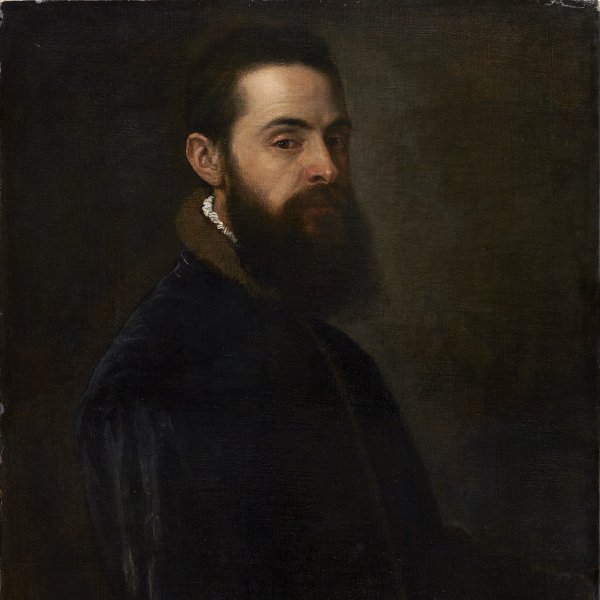Portrait of Doge Francesco Venier
After religious and mythological painting, portraiture was the third most important area within Titian’s oeuvre. Around 80 works considered autograph now survive although we know from written references and copies of lost originals that this number was originally much higher. On the death of Giovanni Bellini in 1517 and during the term of office of Doge Leonardo Loredan, Titian was appointed Official Painter to the Venetian Republic. Among his tasks was the execution of official portraits of new Doges for a commemorative frieze in the Sala del Maggior Consiglio in the Doge’s Palace in Venice. Like the paintings in other rooms in that palace, this portrait gallery was lost in the fire of 1577, including Titian’s official portrait of Doge Francesco Venier. The restoration work commissioned by the Republic after the fire included the replacement of this cycle of portraits by Domenico Tintoretto.
The present painting was first published by Von Hadeln who also identified the sitter. With regard to its provenance, the oldest reference is to the Tivulzio collection in Milan. The canvas was acquired by Heinrich Thyssen-Bornemisza prior to 1930 and was among the works shown at the Neue Pinakothek in Munich that year, when the Thyssen collection was first presented to a wider public.
Born in 1489, Francesco Venier was Doge between 11 June 1554, the date of his election, and 2 June 1556 when he died. He had previously been ambassador to the Republic at the Vatican under Paul III. His short reign was marked by his non-aggressive stance with regard to Venice’s various ongoing conflicts and by an austerity that made him relatively unpopular. Suffering poor health, Venier needed help to move around. An astute, scholarly and sober individual, his funerary monument in the church of the Salvatore was designed by Jacopo Sansovino with sculptures by Alessandro Vittoria.
This autograph portrait, a replica of the official image lost during the fire, may have been commissioned from Titian by a member of the Doge’s family (possibly his brother Pietro Venier) or have been painted for one of the buildings of the magistracy, as Rearick suggested. Titian created a simple composition based on earlier portraits in a typology developed in his portrait of Count Antonio Porcia in the Brera in Milan dated to the second half of the 1530s. In that work the sitter poses in a dark interior that opens onto a landscape through a window. Venier here poses standing with a curtain behind him and a window on the left through which we see a lake. As various critics have noted, the artist deftly conveyed the Doge’s poor health through his body, clad in gold brocade, and the fragility of his physical state that contrasts with his profound, acute gaze. Venier wears the traditional dress of the Doge with the hat, tunic and cloak with elaborate buttons. The episode with a burning boat that takes place outside the window has not been identified although it has been suggested that it is a symbol of the city’s power. In the Hall of the Senate in the Doge’s Palace is a canvas by Palma il Giovane dated to the late 16th century and entitled Doge Francesco Venier presenting to Venice the Cities of Brescia, Udine, Padua and Verona. It again depicts this Doge in a similar pose but full-length. Palma depicts Venier with the same gold and red clothing, also conveying his delicate physical state beneath his heavy robes.
Mar Borobia
Emotions through art
This artwork is part of a study we conducted to analyze people's emotional responses when observing 125 pieces from the museum.














